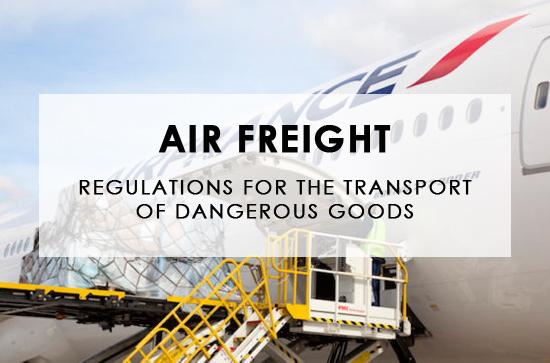The 61st edition of the IATA Dangerous Goods Regulations which came into force on January 1, 2020 incorporates the changes adopted by the IATA and ICAO Dangerous Goods Council. This one is going to regulate the worldwide carrying of dangerous goods.

The transportation of dangerous goods is a recurring demand in the air cargo industry, which raises several questions concerning the complex management of dangerous goods. According to the International Air Transport Association (IATA), each type of hazardous material must undergo specific care and handling in order to be authorized on the plane. In many cases, these goods can be refused.
The better questions in these situations are:
- How are my goods dangerous?
- What should I do to ensure a safe transportation?
The 61st edition of the Regulations for the Transport of Dangerous Goods lists:
- the dangerous goods checklist for the shipment of non-radioactive material;
- the checklist for dangerous goods in case of shipment of radioactive material;
- the checklist for accepting dry ice (carbon dioxide, solid). This last list is to be applied when the declaration of the sender of dangerous goods is not required.
These checklists allow the air operator to monitor shipments of dangerous goods at the point of departure. When one of the checkpoints is not validated ("no" box checked on the checklist), the pick-up must be refused and a duplicate of the duly completed control form given to the shipper.
It is somewhat impossible to list all dangerous products since there are so many. However, to figure out if your goods are dangerous, you can demand from your factory the Material Safety Data Sheet (MSDS). The report will enlist your goods, and will even inform you if they are categorized as Dangerous Goods (DG) and will need the DG Shipper's Declaration (DGD). The MSDS should usually be sent to your freight forwarder which will find an air carrier allowing transportation. Moreover, in some countries, for instance China, a third party certificate may need to be requested. While every airline has the freedom to accept or refuse your cargo, they usually go along the IATA Dangerous Goods Guidelines, which put in place 9 classes that label all DG’s:
Any items that fall into those categories have other variables that also play into the fact that they may or may not be accepted. Amongst others, these are common concerns:
> Weight/Volume of item > Airline
> Number of items in cargo > Airport
> Item in/out equipment > Type of Packaging
> Point of Departure/Point of Arrival > Other (ex: Power/voltage)
For instance in Hong Kong (as of October 2017), Lithium batteries of class 9, are common items in orders; yet they show how complicated the subject can be. The regulations concerning the Lithium Ion Batteries depends on 3 aspects: if the battery is packaged separately, if included in same package as equipment but separated, or if contained in equipment. In details : the battery on its own will not require a DGD if the cell or battery is under (or equal to) 2.5Kg and under (or equal to) 2.7Wh per package. However, when packed with equipment or contained in equipment the cell must be under or equal to 20Wh, while the battery under or equal to 100Wh.
When it comes to DGs, airlines are entitled to refuse a booking or delay it a really long time: the reason for that can be that either their limited space for dangerous products is full, or that simply the company or the staff does not want to be reliable for an accident. Understandably, DGs have a higher chance of causing accidents and since aircrafts are at a higher stake of being destructive, airlines simply do not want to take the chances. Nevertheless, many companies are agree to carry hazardous products if packaged and loaded correctly.
As previously explained, the topic of dangerous goods can fluctuate and vary depending on the situation, the items, and the airline. When it comes to packaging, the standards/requirements regularly changes depending on the situation. However, for each DG shipment, the airline and the airport will need the MSDS report in order to advise the factory of how to package the goods (if order is already accepted by airline).
Taking again the example of lithium batteries, IATA shared some insight on how some batteries can be packed in a dangerous goods documention list.“Packaged batteries or cells must be separated in a way to prevent short circuits and damage to terminals. They must be packed in a strong rigid outer packaging unless when contained in equipment, the battery is afforded equivalent protection by the equipment in which it is contained.”
Of course, for each product/situation, the airport or airlines will demand a specific package accordingly.
The subject of DG’s is quite complex due to endless numbers of cases and exceptions. Airlines can make the matter more complicated since they, while following IATA regulations, choose whether the order is fit to fly or not. The best way to know if your merchandise if dangerous or how to package accordingly is to refer to your factory and your freight forwarder.



